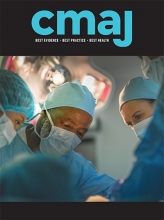A 30-year-old woman with a diagnosis of schizophrenia presents to her family doctor. She was discharged from a psychiatric facility 2 weeks earlier after treatment for relapse of psychosis. She commenced treatment with paliperidone (a second-generation antipsychotic medication) 6 mg/d 6 weeks before discharge from the psychiatric facility, and she has responded well to the treatment. The psychosis is in remission; however, the patient is reluctant to continue with the treatment and requests that the medication be stopped.
What further questions should be asked on history?
It is important to ask about the adverse effects of antipsychotic medications, including galactorrhea and amenorrhea. Women often feel uncomfortable reporting information about reproductive adverse effects.1 On direct questioning, the patient reports that she has been lactating for the past 3 weeks and that her menstrual cycle has been irregular. Hyperprolactinemia should be considered, and a detailed drug and medical history should be taken to consider possible causes (see Box 1 for causes of hyperprolactinemia to be considered).
Causes of hyperprolactinemia2,3
Pharmacologic
Antipsychotic medications
Antidepressant medications (imipramine, amitriptyline, clomipramine)
Antiemetic medications (metoclopramide, domperidone, cimetidine)
Antihypertensive medications
Estrogen medications
Verapamil
Physiological
Pregnancy
Lactation
Stress
Breast stimulation
Macroprolactin
Pathologic
Pituitary tumours
Chronic renal failure
Cirrhosis
Primary hypothyroidism
Cushing disease
Acromegaly
What should be considered on physical examination?
On physical examination, there is bilateral milky secretion from the nipples, consistent with galactorrhea. Examination of the visual fields is normal (bitemporal hemianopia, a common finding in pituitary tumours, is important to consider in all cases of hyperprolactinemia).
Should further investigations be ordered?
The patient’s serum prolactin level was 130 μg/L (2756 mIU/L) (normal range 0–25 μg/L [0–530 mIU/L] in nonpregnant women, 0–20 μg/L [0–424 mIU/L] in men). Pregnancy was ruled out through blood and urine pregnancy tests. Blood tests, including renal, hepatic and thyroid function tests, were conducted.4 If the elevated prolactin level does not coincide with antipsychotic therapy, or does not reduce in response to adjusting the treatment, magnetic resonance imaging (MRI) of the brain should be done to investigate for an abnormality in the hypothalamopituitary region.5
In this patient, the direct correlation between treatment with antipsychotic medication and the start of symptoms points to the most probable diagnosis of antipsychotic-induced hyperprolactinemia. If findings are equivocal, a referral to an endocrinologist should be considered. Treatment with antipsychotic medication can frequently cause increases in prolactin up to around 4 times the normal upper range. Prolactin levels that are orders of magnitude higher are less likely to be caused by antipsychotic medication, and other causes should be considered.
Hyperprolactinemia is caused by blockade of dopamine D2 receptors in the tuberoinfundibular system of the hypothalamus. Elevated prolactin levels inhibit luteinizing hormone and follicle-stimulating hormone, leading to low estradiol and progesterone, and abnormalities in testosterone levels. Marked prolactin excess (> 100 μg/L [> 2120 mIU/L]), is associated with hypogonadism, galactorrhea, hirsutism, acne, sexual dysfunction, atrophic changes in vaginal mucosa, amenorrhea and osteopenia with associated risk of fractures.6 These effects are distressing and can cause long-term harm. Antipsychotic medications can cause menstrual disorders in 15%–50% of women owing to increased prolactin levels.7 Between 48% and 93% of premenopausal women and 42%–47% of men taking antipsychotic medications have hyperprolactinemia, with the effect being directly dose related.2
How should this case be managed?
Once antipsychotic treatment is confirmed as the cause of the raised prolactin level, the following steps should be considered: a dose reduction if the patient’s mental state is stable, aiming for the lowest effective therapeutic dose of the antipsychotic medication; and substituting the antipsychotic with one that has a lower propensity to elevate prolactin, weighing the benefits of making the change with the risk of precipitating a relapse of psychosis (Box 2).
| Medication | Relative effect on prolactin level* |
|---|---|
| Risperidone | +++ |
| Paliperidone | +++ |
| Haloperidol | ++ |
| Olanzapine | + |
| Sertindole | + |
| Asenapine | + |
| Ziprasidone | + |
| Quetiapine | +/− |
| Clozapine | +/− |
| Aripiprazole | +/− |
↵* The “+” symbol refers to the relative propensity for prolactin levels to be elevated; “+/−” indicates that prolactin levels may be minimally elevated or not affected.
Case revisited
The patient’s history and investigations were consistent with antipsychotic-induced hyperprolactinemia. She was provided with education about the cause of her symptoms and the role of the antipsychotic medication. The dose of paliperidone was reduced from 6 mg to 3 mg. She returned for a follow-up visit after a month; repeat prolactin measurement showed her level was still high, and she continued to lactate. Paliperidone was discontinued and substituted with aripiprazole at a dose of 15 mg/d. Aripiprazole is licensed for the treatment of schizophrenia and is associated with a less than 5% rate of hyperprolactinemia.10 This treatment plan was successful. The psychosis remained in remission, and the patient’s prolactin level started to decrease and return to normal. After 2 months she stopped lactating, and by 4 months her menstrual cycle became regular.
Footnotes
Competing interests: None declared.
This article has been peer reviewed.
The clinical scenario is fictional.
Contributors: Both authors contributed to drafting the work, gave final approval of the version to be published, and agreed to be accountable for all aspects of the work.











